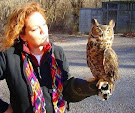Saturday, July 12, 2008
Friday, June 27, 2008
A Birder/Cat Owner/Veterinarian's View
One veterinarian’s view:
When starting this conversation, one of the first terms to define is what kind of cat you are talking about. A feral cat is one that is truly “wild,” unowned and living without any, or with very limited, human intervention. Then, there are stray cats, also unowned, but supported in part by people. These include the public cat colonies fed by well-meaning cat lovers and the stray that shows up in your yard from time to time, looking for a handout. Finally, there are owned cats, some of which might be called “barn cats,” owned, fed and casually cared for, but never coming indoors, and pet cats who live mostly indoors, but are allowed some outdoor time as part of their daily routine. Management styles must be modified based on what kind of cat problem you are addressing.
Feral cats actually make up the smallest portion of the cat population. Due to the rigors of their lifestyle, their lifespan is short, approximately 2 years. Poor nutrition means their reproductive rate is low. Without supplemental feeding, litter numbers are small and few kittens survive to adulthood.
Subsidized cat colonies may consist of dozens or even hundreds of cats. Well-meaning but uninformed people who provide food for these cats contribute to the problem by improving the cats’ nutrition, thus increasing their fecundity. The concentration of large numbers of cats in a small area increases the fecal pollution, and raises the risk of zoonotic disease. Cats using park lands or sandboxes put people, especially children, at risk for roundworms (which can cause blindness or neurologic disease) and toxoplasmosis, a cause of human birth defects. Colonies are often in sheltered areas, and the security and reliable food source attracts new feline members. Irresponsible pet owners may dump their unwanted kittens in the vicinity, assuming “someone will care for them.”
Owned cats are the unseen fly in the ointment. Pet owners may believe that their well-fed cat has no need to hunt, but the predatory instinct of a feline will not be denied. Even if not hungry, cats will take and kill birds, small mammals, snakes and frogs.
Leash laws can be enacted for owned cats, but won’t control the feral or stray cat, and would be extremely difficult to police in rural areas, where a good mouser is prized. Colony caretakers won’t tolerate any policy that involves killing their beloved charges. Trapping and removing all cats and kittens allows new strays move into the void, perpetuating the colony. TNR, Trap/Neuter/Release, has been advocated by cat lovers, as it establishes stable and non-reproducing colonies, but doesn’t answer the question of wildlife decimation.
So, what is the answer? The truth is, no one answer fits all the situations. Feral cats are not good candidates for adoption. Trap/Remove might work for feral cats which are in areas where people don’t have proprietary emotional ties to them. TNR of public cat colonies, with adoption of kittens and tame adults, and returning sterilized adults to the colony, is currently the accepted option where public outcry makes removal politically unacceptable. Educating the public is critical for controlling the pet cat population, with a big emphasis on spay and neuter to decrease the ever-burgeoning overpopulation problem.
Friday, June 20, 2008
A few ideas from the birder's side
An interesting forum was begun on the Bird Education Network's email list. Laura Erickson and others said this to say:
~~~~~~~~~~~~~~~~~~~~~~
~~~~~~~~~~~~~~~~~~~~~~~~
~~~~~~~~~~~~~~~~~~
And none of this takes into account the toxoplasmosis that cats toying with birds usually carry, and how dangerous cat feces, and runoff from them, are to some marine mammals.
~~~~~~~~~~~~~~~~~
But the way to appeal to cat lovers isn't to try to turn them against cats, which is impossible. It's to appeal to their feelings towards birds. People as a rule are shockingly ignorant about wild birds--bringing especially vulnerable species like Piping and Snowy Plovers to the forefront in our discussions of cats, and showing adorable photos of the babies, stressing that they're flightless for a full month after hatching, provides a more engaging platform for discussion.
~~~~~~~~~~~~~~~~~~~~~~~~~~~~~~~~~~~~
Duluth, Minnesota, adopted a cat leash law several years ago. What finally convinced both the City Council and enough citizens was the evidence provided not by ornithologists but by veterinarians and the county health department.
Wednesday, June 11, 2008
Inaugural post
I reserved this blog name a while back, because I wanted to create a forum of birders, cat-lovers, and cat-loving birders.
While I am decidedly biased in favor of the birds, I also have owned numerous cats in my day and I have loved them all.
What I want to do with this blog:
- Establish a dialogue between birders, cat-owners, conservationists and all interested in the conundrum on our plate, called "the feral cat problem" or "outside cats" or whatever you wish to call it.
- Maybe come up with some real solutions to the problem
There are many, many facets to this situation. I hope to eventually get to all of them.
Let the games begin!
